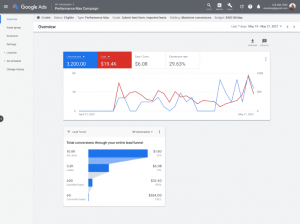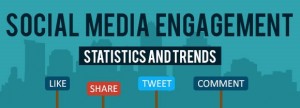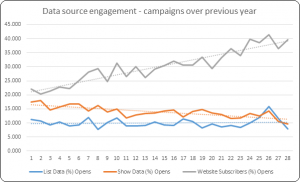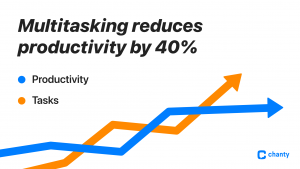Plus, Martech is hiring
Good morning, Marketers, and what about the website?
Yes, we spend a lot of time talking about mobile apps and social media and CCTV and virtual events and voice and bots — whatever the channel of the moment happens to be. But the truth for many brands has long been that the website (or in some cases a vast network of websites) is still the main portal for meeting potential and existing customers.
Even that undersells it, because the acceleration in digital marketing across all verticals which 2020 delivered has made the website — especially if you include mobile web — more important than ever. We can draw at least two conclusions. The web experience you offer your audience should be fresh, up-to-date and relevant. And one way, at least, to allow business teams to make timely changes to web content is to look at no code web development solutions.
And you’ll find stories about both those ideas below.
Kim Davis
Editorial Director
Reimagining a brand website
“It’s truly the focal point for almost everything we do. All of our sales and marketing activities, all roads lead back to the website: support comes back to the website, customer engagement comes back to the website.” That was Stephen Tisa, Senior Director of Digital Technology at human capital and workforce management brand UKG, explaining his company’s most important channel to the MarTech audience.
Tisa and Todd Purcell, Head of Digital Banking, Marketing & Experience at Connecticut-based Webster Bank, were sharing their experiences in conducting major re-imaginings and re-launches of their websites. UKG had been created from a merger of two established brands, and faced the challenge of having “two of everything.” The strategy has been to gradually bring content to a new “canopy” site from the legacy sites. Webster Bank faced the challenge of a website which hadn’t been significantly refreshed in six years.
A website relaunch isn’t something marketing does on their own, said Tisa. “Talk with the rest of the people in your company. You can’t do this stuff in a silo. Try to understand what all of your internal goals are.” Purcell advocates for a holistic approach rather than making small changes and facelifts. “Try to build internal competencies so you can actually have a team that can work with the agency in a very complementary fashion,” he said. “Identify internal stakeholders. Really involve the CEO, early and often. We spent a lot of time with the C-suite, and especially with the CEO, to make sure he understood what we were doing.”
Dynamic website design rides the no code wave
As was made clear at last week’s MarTech conference, no code tools are unlocking creativity within organizations. In the words of Scott Brinker, they are transforming marketers into makers. More members of the marketing team have their hands on mobile app creation, web apps, social media and virtual assistants. But as we’ve also discussed here, the website isn’t going anywhere.
Enter the open source ecommerce developers at Nexcess. Recently they launched StoreBuilder through their website support brand WooCommerce. The new solution is no code and creates unique customized web pages for online storefronts. WooCommerce, where merchants can use StoreBuilder, is open source and sits on top of WordPress.
In helping marketers build their own unique ecommerce site, StoreBuilder doesn’t use traditional templates. Instead, it aims at building a website that’s easy to navigate, based on ecommerce data from thousands of stores in 10 sectors. StoreBuilder AI determines the intuitive format tailored to a specific user, who can then add and update with new customized content.
Why we care. Ask marketers if they should change something on their business’s website and they will ask what the data is behind the change, or run a test. Digital design is a crucial element of revenue generation in ecommerce. So, taking the next step and having AI develop the web design based on industry-specific data is a good first move. Because the StoreBuilder is no code, it will bring together more creative minds on the marketing team. Ecommerce experiences will look refreshing to customers and allow newcomers to distinguish themselves as more and more shopping goes digital.
We’re hiring an editor for MarTech
Third Door Media, the parent company of MarTech Today, is currently looking for a seasoned storyteller to cover how marketing technology is changing what it means to be a marketer. We’re specifically looking for an experienced journalist with either past experience or a deep curiosity for covering this tech-enabled approach to marketing that we call MarTech. This is also a forever-remote position.
What you will do
As an editor of MarTech Today, your main responsibility is to create a range of journalistic content that includes:
- Well-reported features
- Guides
- Profiles
- Enterprising news articles
- Daily newsletters
- Moderated video panels
- Conference presentations (live or virtual)
- Collections and packages
- Content promoting editorial projects
What you won’t do
MarTech Today’s purpose is to create deeply informative and educational content that helps our audience succeed. That means you won’t be spending your days rewriting press release and newswire content.
Is Clubhouse for brands?
Struggling on Twitter, Instagram and LinkedIn? Maybe Clubhouse is the solution. Clubhouse, as even non-users surely know, is the (currently) invitation-only real-time audio social network, and brands are already seizing it as a platform for conversations and thought-leadership. Does that make sense? Some LinkedIn users have strong opinions.
“Social media is silly. MySpace years ago, Facebook (March 23, 2021), and Club House today. New is always the shiny. Being an earlier adopter feels useful — Doesn’t anyone have real work to do?” asked Justin Hitt of Wells Fargo. “I don’t see the direct value of Clubhouse compared to other channels. What is the value add except from the hype?” asked Bernt-Olof Hellgren of SAS.
Some were more positive. Asif Visram of the Visram Group saw Clubhouse as an opportunity to reflect non-transactional relationships between brand and customer: “Real people are the key to authentic relationships. Consumers want to learn more about the people behind their favorite brands not just pushing product & services.” Said Vik Kasturi of Digivity: “IMHO, Clubhouse may actually turn out to be a more effective channel for brands that choose to engage in authentic conversations with their audience. The CH experience enables all users to participate in the most natural manner by using Human voice and is in real time so the authenticity is very real on this platform without the usual edits or filters.”
One thing Clubhouse has in common with a number of other social platforms. It’s divisive.
Quote of the day
“Old ways of doing digital marketing won’t work. Time to rethink, adapt and thrive. Companies focused on building first-party data have had a massive headstart. High time for others to start following suit lest they be left behind.” Puneeth Prasad, co-founder, WhatElse
(41)
Report Post








